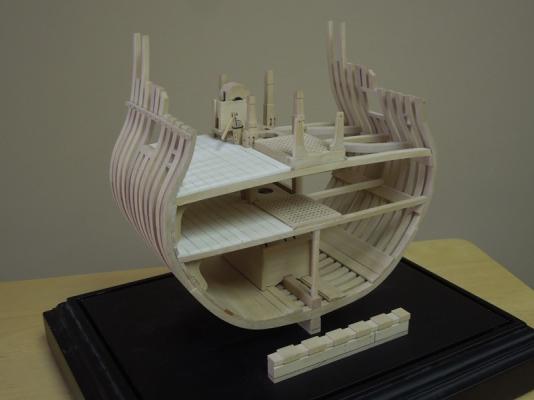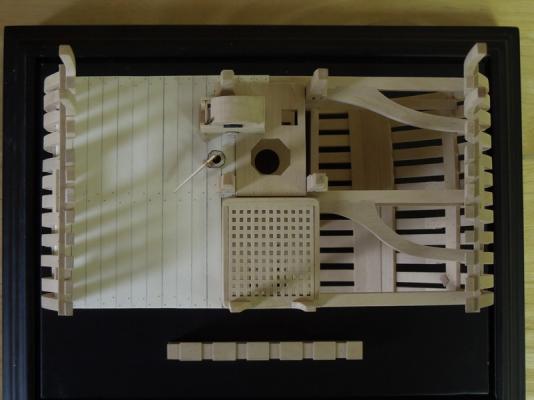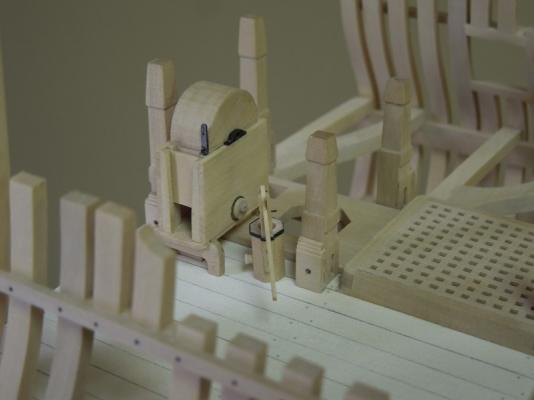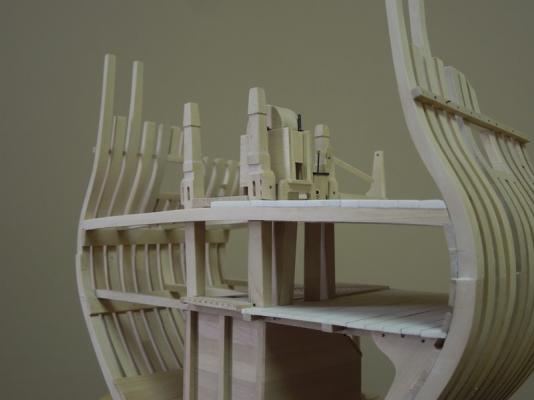-
Posts
2,459 -
Joined
-
Last visited
Content Type
Profiles
Forums
Gallery
Events
Everything posted by dvm27
-
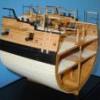
Proxxon Micro Planer DH40 - owner feedback??
dvm27 replied to rtropp's topic in Modeling tools and Workshop Equipment
Both machines have their use in the workshop. For thicker billets that need to be quickly reduced the Proxxon planer is perfect. It makes very fast and smooth cuts. For dimensioned wood that is close to final thickness I use the Byrnes thickness sander. You could get by with just the Byrnes sander but it is designed to remove a few thousandths of an inch at a time (hence it's use as a precision tool). -

Proxxon Micro Planer DH40 - owner feedback??
dvm27 replied to rtropp's topic in Modeling tools and Workshop Equipment
The Proxxon planer is a first class piece of machinery. It cuts smoothly and consistently and the auto-feed feature is outstanding. You can affix the wood to a sled (thicker piece of wood) with a couple tacks of glue to facilitate the process of getting very thin pieces. -
You've clearly mastered the sail technique, both furled and set. The back lit photo could pass for the real ship. Have a great tropical rest, Dan! I think we've all had our fill of this winter
- 241 replies
-
- queen annes revenge
- pirate
-
(and 2 more)
Tagged with:
-
Cumulative error is a constant threat in plank on frame modeling. It's still a beautiful looking hull and you might consider fairing out any unevenness and planking her outside. That would cover most of what you are not happy with. It would make a very nice companion to your fully framed next effort.
- 172 replies
-
- druid
- sloop of war
-
(and 2 more)
Tagged with:
-

HMS Naiad 1797 by albert - FINISHED - 1/48
dvm27 replied to albert's topic in - Build logs for subjects built 1751 - 1800
Sweet work, Al. You are going to need to invest in a camera with macro capability so that we can better appreciate your work! -
Damned sneaky, Mike. And quite brilliant solution to getting those transom slots perfect! Will definitely file that one away.
- 968 replies
-
- hahn
- oliver cromwell
-
(and 1 more)
Tagged with:
-
Well Chuck, you're in good company. Dean of plank of frame ship modelers Harold Hahn wrote that he never spiled a plank or needed a stealer strake.
- 1,051 replies
-
- cheerful
- Syren Ship Model Company
-
(and 1 more)
Tagged with:
-
Fabulous, Chuck. It's a pretty simple technique to do but not live in front of twenty guys! Your club is lucky to have a mentor like you.
- 1,051 replies
-
- cheerful
- Syren Ship Model Company
-
(and 1 more)
Tagged with:
-
Echo update #8 is completed and posted on our website http://www.admiraltymodels.com. My version below shows the stock framing package on the port side and the fully fitted out version in progress on the starboard side.. Please keep in mind when ordering the framing package that it is the complete framing only. The fitting out instructions are free of charge and posted on our website every few months. We are hoping to develop and sell a fitting out package in the near future complete with laser cut deck beams, gun carriage and other details. Stay tuned.
-
Congratulations, Ben, on a significant milestone. She looks beautiful!
- 889 replies
-

Echo by jml1083 - 1:48 - Cross-Section
dvm27 replied to jml1083's topic in - Build logs for subjects built 1751 - 1800
Your chart is correct, Jim. Very useful. The framing plan below should correlate well. Just change the 8 1/4" toptimbers to 8". Pay special attention when shifting timbers. It's easy to shift them the wrong direction. Accurately dimensioned spacers and a dead flat surface (like glass) make this step a lot easier. Sided frame dimensions.pdf -
Looks terrific, Mark. Cumulative error is always lurking out there to bite us, especially in a fully framed hull.
- 172 replies
-
- druid
- sloop of war
-
(and 2 more)
Tagged with:
-
We all knew you'd nail those plates (literally). It was just a question of time. Your work inspires us all!
- 3,618 replies
-
- young america
- clipper
-
(and 1 more)
Tagged with:
-
Love the battens, Remco. Are you wet or dry bending them?
- 1,215 replies
-
- sloop
- kingfisher
-
(and 1 more)
Tagged with:
-
Love the way it's coming together, Ed. This would be a great model to complement the real Cutty Sark.
- 3,618 replies
-
- young america
- clipper
-
(and 1 more)
Tagged with:
-
Love the fully finished vs. in frame approach, Toni. So how will you display her? I heard of a fellow whose case pulled out from the wall on tracks (like a drawer) so it could be rotated every few months or so when he wanted to see the other side.
- 1,449 replies
About us
Modelshipworld - Advancing Ship Modeling through Research
SSL Secured
Your security is important for us so this Website is SSL-Secured
NRG Mailing Address
Nautical Research Guild
237 South Lincoln Street
Westmont IL, 60559-1917
Model Ship World ® and the MSW logo are Registered Trademarks, and belong to the Nautical Research Guild (United States Patent and Trademark Office: No. 6,929,264 & No. 6,929,274, registered Dec. 20, 2022)
Helpful Links
About the NRG
If you enjoy building ship models that are historically accurate as well as beautiful, then The Nautical Research Guild (NRG) is just right for you.
The Guild is a non-profit educational organization whose mission is to “Advance Ship Modeling Through Research”. We provide support to our members in their efforts to raise the quality of their model ships.
The Nautical Research Guild has published our world-renowned quarterly magazine, The Nautical Research Journal, since 1955. The pages of the Journal are full of articles by accomplished ship modelers who show you how they create those exquisite details on their models, and by maritime historians who show you the correct details to build. The Journal is available in both print and digital editions. Go to the NRG web site (www.thenrg.org) to download a complimentary digital copy of the Journal. The NRG also publishes plan sets, books and compilations of back issues of the Journal and the former Ships in Scale and Model Ship Builder magazines.



